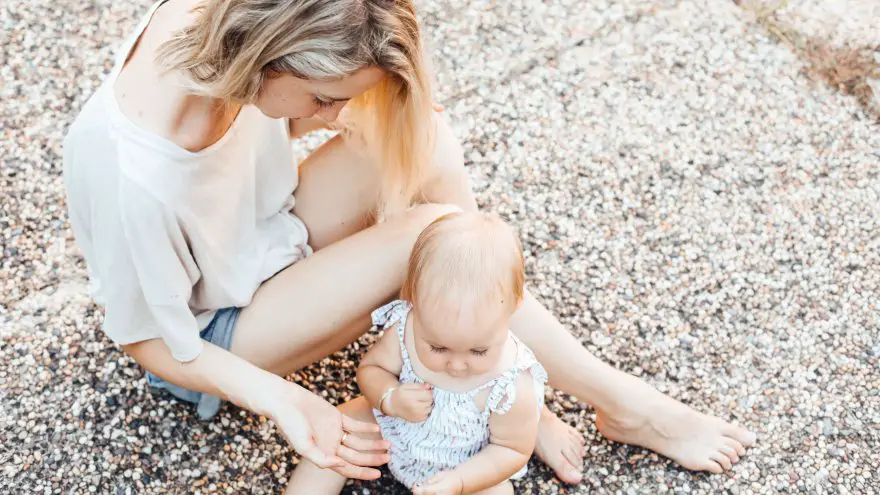How Your Attachment Style Affects Your Parenting?

More often than not, when we say “attachment style”, we picture the manner through which our children relate to us as their parents and the way they interact with us on a closer or more detached emotional level. However, their attachment style is only influenced by their parents’ styles, and often the parent who spends the most time with the child has a bigger impact on their personality and education. As such, if our child’s attachment style is influenced by our own, then it should not be a surprise to find out that our own style was influenced by our parents as well, or by our guardians while we grew up.
The way we interacted and how we got along with our own parents places its mark in our developed styles, be that an attachment style, a parenting one or just how our personality was shaped up overall. As such, it’s natural that the style we more or less “inherited” from our parents, but progressively changed to fit our later on acquired beliefs about what kind of behaviors benefit us more, will impact the way we raise our children and the way we build our relationships with them. Attachment styles go hand in hand with parenting styles, as a parent with a stronger emotional bond with their child is more prone to want to be involved and stay up to date with everything that happens in their child’s life, while a more emotionally detached parent might not stress over so many aspects at once, or might even not be as close to their child in the first place.
Given that our attachment style dictates how well we get along with our child and on what levels we are able to understand their struggles and as such are able to help them and positively impact their development, it’s important to be aware of what our style is and how it can affect our relationship with our children.
To help shed some light on which are the famous four attachment styles and help you discover the one that fits you best, or perhaps the one you would like to adopt, we have put together a list with a run-down of each style!
The Secure Attachment
A secure attachment is what could be summed up as seeing the parent as a safe zone. The child perceives their caretaker as someone they can trust whenever they have a problem when they need someone to fall back on, and as such it provides a sense of security and safety. On top of that, the bond of trust means that the parent is always available and in a position to help and listen to their child, which is a great way to nurture the young one’s mental health and keep track of their development and make sure everything is going well for them. It leaves no room for uncertainty, which children appreciate more than it might seem, although they don’t realize it. And with being helped to flourish, their senses of self-esteem, self-confidence, and independence improve as well, not to mention the likeness of keeping their desire to explore and learn as they grow, since their efforts are encouraged and they benefit from their parent’s moral support and care.
The Anxious/Preoccupied Attachment
A parent whose attachment style is anxious or preoccupied often goes through different behavior periods or might be perceived as moody. They could be available for their child’s needs today, while tomorrow they will be too busy with something else to give their child the attention they need or the care required to maintain a knit-tight bond with them. Because of that, the child develops this tendency to attempt to take advantage of their parent’s availability or presence whenever they can, which results in the parent feeling anxious or overwhelmed by their child’s needs and even clinginess. They try to avoid their own child in order to avoid the stress, or they might even try to hand over some of their parental duties to their significant other in order to help them feel less overwhelmed with their child’s strong and sudden need for attention and affection.
In response to their parent’s behavior, the child becomes clingy and desperate for attention, which turns into a constant hunger for attention and validation. It doesn’t help with their self-esteem at all, much less with their confidence in their own abilities and it can leave them perceiving the household as an insecure environment.
The Dismissive Attachment
A parent with a dismissive attachment style is a parent who successfully provides for their child’s basic needs but has issues addressing the child’s emotional needs. It might feel a lot like they consider that their job as a parent is done when the child’s physical needs are met, not threading onto an emotional territory to form any sort of bond or nurture their mental health, but in reality, it might not be something their do on purpose.
However, regardless if it’s done on purpose or not, the child is impacted just the same. While not all results seem to be negative, an emotional detachment will always represent a hurdle the child has to overcome whenever they try to get close to someone, or even when they try to relate to their parents.
While this kind of attachment greatly improves their sense of independence, growing up with the idea that they have to manage on their own and get out of different conflicts without any exterior help coming from their parent, it also makes the child see no reliable helping pillars in their life, which should have otherwise been represented by their parents. They get used to their independence and they no longer consider involving their caregivers in their plans, nor do they see them as a source of advice anymore. As such, the child develops their own sense and strategy of “raising themselves” and detach themselves even further from their parents.
The Disorganized/Fearful Attachment
A disorganized kind of attachment is created when the parent frequently changes their strategy of reacting to different kinds of behavior that come from their child. In public, their reactions might be one, while in the intimacy of their own household the child might get scolded or punished for the same actions or behaviors that were once not paid attention to. That kind of behavior, coming from their caretaker, builds a sense of insecurity and even fear in their child, which pushes them away from the parent and can even cause them to retreat into their own shell, which prevents them from coming out to explore and discover things like any other child should.
In the end, if your attachment style doesn’t seem to benefit your child and their own development and you feel like a change might be needed, then it’s never too late to adjust your behavior! Remember you can always ask for help from a professional or you can share your concerns regarding your attachment style with your significant other as well, to work together on improving your household’s relationships.






